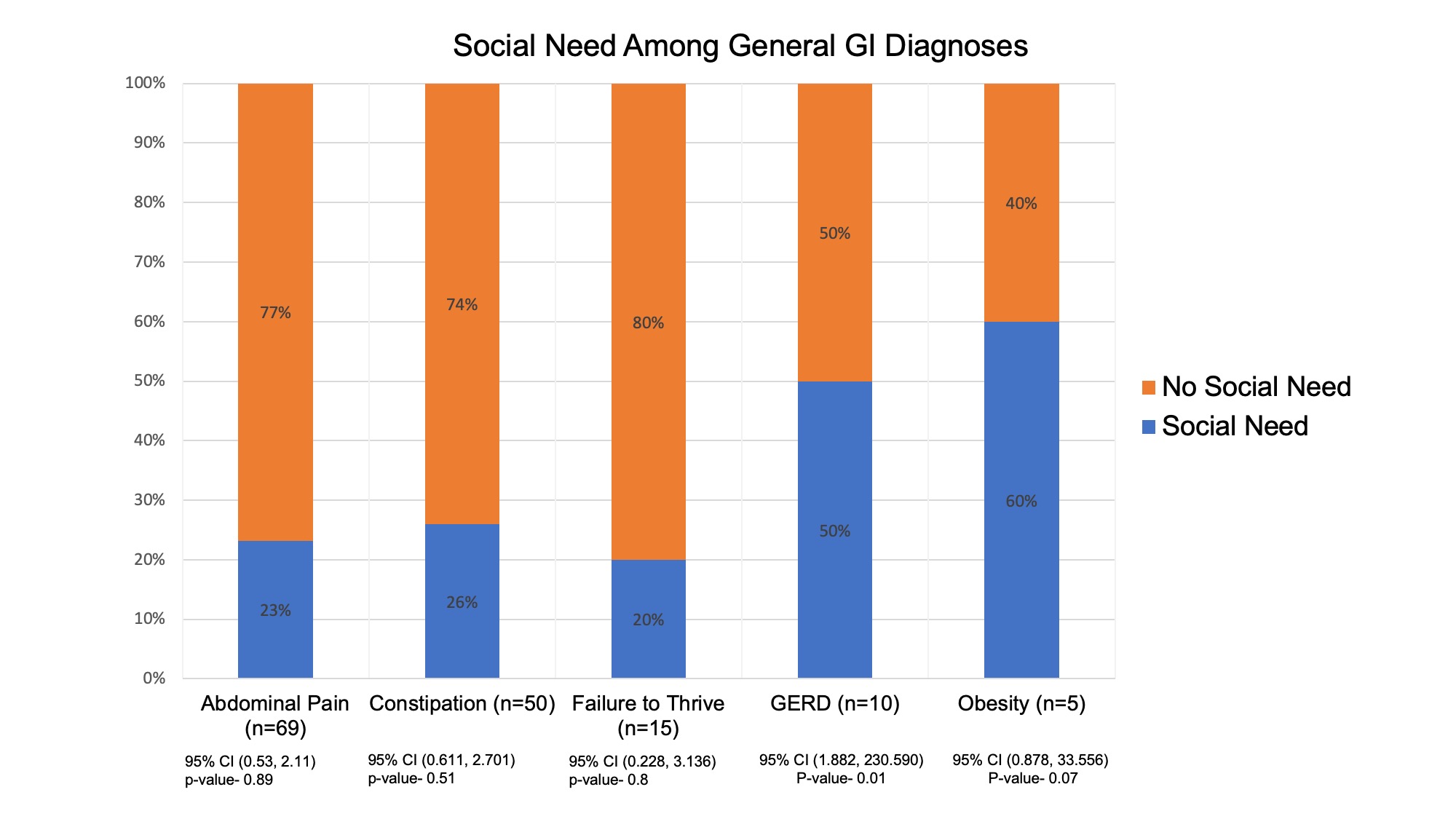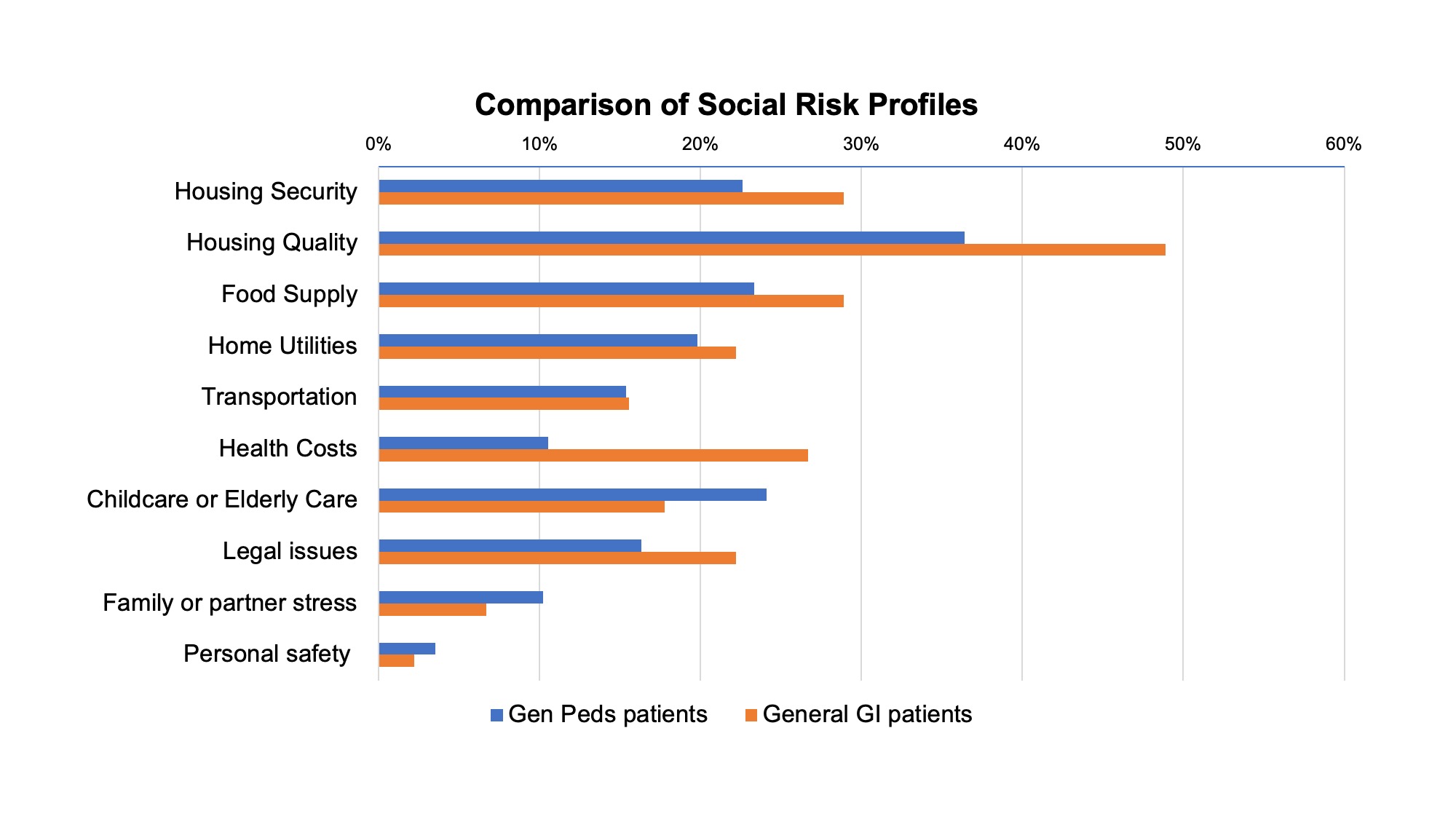Health Equity/Social Determinants of Health
Health Equity/Social Determinants of Health 7
668 - Evaluating Social Risk Burden of Pediatric Outpatient General Gastroenterology Patients at an Urban Children's Hospital
Publication Number: 668.318

Anamika Saha, MD, MPH (she/her/hers)
PGY-3 Social Pediatrics
The Children's Hospital at Montefiore
Bronx, New York, United States
Presenting Author(s)
Background:
Studies involving adult patients have demonstrated a correlation between lower socioeconomic status - a social determinant of health (SDH) - and increased gastrointestinal symptoms. Within the pediatric gastroenterology (GI) patient population, limited data exists on such associations. We hypothesize that pediatric GI patients may have higher or different social need profiles than general pediatric patients, given their increased health needs.
Objective:
Compare social need prevalence of pediatric outpatient general GI patients to general outpatient pediatric patients
Determine associations between social need and referring GI diagnoses
Design/Methods:
This is an 8-month prospective pilot study of patients aged 0 - 21 yo, at a GI clinic visit compared with general pediatrics clinic patients and who completed a SDH screener in the same time period. The 10-item standardized screening instrument is adapted from the Health Leads Toolkit and has been used throughout the hospital network since 2017 in various clinical settings. It assesses 8 domains of social need: housing, food supply, utilities, transportation, health costs, childcare, legal issues, and personal safety. Families that screen positive are offered resources based on indicated need. Data utilized for this study is sourced from the electronic medical record and analyzed using multivariate logistic regression models to measure associations among social need, patient demographics, and referring GI diagnosis.
Results:
199 GI patients and 13,326 general pediatric patients completed an SDH screener between November 2021-July 2022. 22.6% GI patients screened positive for at least 1 domain of social need, compared to 13.1% of general pediatrics patients. GI patients are 83% more likely to report at least one social need when adjusted for age, sex, language, ethnicity, and insurance status (95% CI: 1.30, 2.58). Housing quality was the predominant social need amongst both groups but there were no significant differences between 8 SDH domains. Patients with referral diagnosis of gastrointestinal reflux disease (GERD) are 20.8 times (p=0.01) more likely to have social need than patients with other diagnoses. No significant association was found between social need and abdominal pain, constipation, failure to thrive and obesity(Figure 1).
Conclusion(s):
Pediatric GI patients have a higher burden of social need than their general pediatric patient counterparts; thus, adoption of routine SDH screening should be considered for all pediatric GI patients. More data are needed to determine if there are associations between social need and GI diagnoses.

